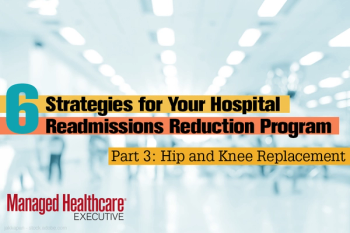
During the state of the industry webinar, AHIP experts reviewed policies and solutions to improve affordable access to care and shape healthcare in the post-pandemic world.

During the state of the industry webinar, AHIP experts reviewed policies and solutions to improve affordable access to care and shape healthcare in the post-pandemic world.

Despite calls for better integration of social care into healthcare delivery, the lack of adequate payment models has stymied efforts to improve health and reduce costs by paying for social interventions.

The high cost and limited clinical evidence for cell and gene therapies have led U.S. health plans and countries outside the United States to limit access.

UT Southwestern Accountable Care Network in Dallas led the pack in 2019 shared savings, garnering $50,626,938.

Community-based organizations should position themselves as groups with a deep, working knowledge of an area's geography, communities and residents.

Some employers would benefit if their older employees go on Medicare, and people in their 60s would have some safety net if they can't find a job with benefits. Provider revenues might take a hit because of lower Medicare reimbursement.

The leading community oncology practice partnership has been an early adopter of biosimilars, and a trouble-shooter for hurdles with payers.

Dr. Deepak Bhatt presents results that show Vascepa cuts the risk for surgeries to restore blood flow to the heart by a third.

When Medicaid pays for food, it helps prevent chronic disease.

COVID-19 forced a shift to virtual behavioral health therapy. Some once-skeptical providers, however, are finding telehealth beneficial. Reimbursement and continued relaxation of regulations will determine whether it’s here to stay.

The telehealth industry and its observers have been surprised by how quickly the healthcare system has pivoted to telehealth and providing care remotely.

A recent study suggests healthcare organizations see reimbursement concerns-as well as differences in business culture – as roadblocks to embracing digital health partnerships.

Could per-person adjustments to Medicaid payments help better address social inequalities that affect overall health?

CMS has put forth pricing transparency provisions for both hospitals and insurers – but what will they really mean for healthcare?

In the shift from quantity to quality, there are five critical areas where quality is critical.

A recent survey found what were the biggest issues facing value-based care.

Encouraging weight loss, smoking cessation, and management of diabetes prior to surgery can help avoid post-operative problems.

Healthcare is still undergoing a large number of M&As – but are they offering the kind of value originally sought? New research suggests not.

In a long-awaited move, HHS proposes to overhaul the federal anti-kickback statute and Stark Law for today’s value-based environment.

Effective reimbursement models are the key to the future success of gene therapies, a new PwC report shows.

They’re a huge part of healthcare spending-but administrative costs don’t have to be so high.

What to consider when balancing cost and quality in oncology care.

Medical groups offer new ways to help better streamline the model.

Provider, life sciences, biotech, IT, and financial industry leaders weigh in.

The ultimate guidebook on everything you need to know about reducing hospital readmissions-the most common risk factors, the reimbursement issues, and how real-world hospitals are solving the problem.